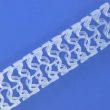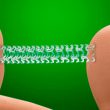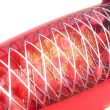A center carrying out a mid- to long-term follow-up of the performance of everolimus-eluting bioresorbable scaffolds (Absorb) observed that this new device has an acceptable rate of major cardiovascular events, when compared to second-generation drug-eluting stents. Furthermore, although the population was complex and non-selected, no cases of early thrombosis were reported. This study enrolled 249 patients...
BVS: Safe Also in Peripheral Territory
Original Title: Bioresorbable Everolimus-Eluting Vascular Scaffold for Patients With Peripheral Artery Disease (ESPRIT I) 2-Year Clinical and Imaging Results CME. Reference: Johannes Lammer et al. J Am Coll Cardiol Intv. 2016;9(11):1178-1187. This is the first study on humans to assess the bioresorbable everolimus eluting vascular scaffold for the treatment of peripheral artery disease involving...
Instent restenosis: Drug eluting balloons or drug eluting stents?
Original Title: Long-Term Results of Everolimus-Eluting Stents versus Drug-Eluting Balloons in Patients with Bare-Metal In-Stent Restenosis 3-Year Follow-Up of the RIBS V Clinical Trial. Reference: Alfonso F. et al. JACC Cardiovasc Interv. 2016 Jun 27;9(12):1246-55. Courtesy of Dr. Agustín Vecchia. RIBS V 3 year follow up Stents have become the gold standard for...
Chronic total occlusions: Pilot experience with BVS
Original Title: Percutaneous coronary intervention for chronic total occlusion of the coronary artery with implantation of bioresorbable everolimus-eluting scaffolds. Poznan CTO-Absorb Pilot Registry. Reference: Maciej Lesiak, et al EuroIntervention 2016;12:e144-e151 Courtesy of Dr. Carlos Fava. Chronic total occlusion (CTO) is a real challenge and have a success rate of around 80% with trained...



